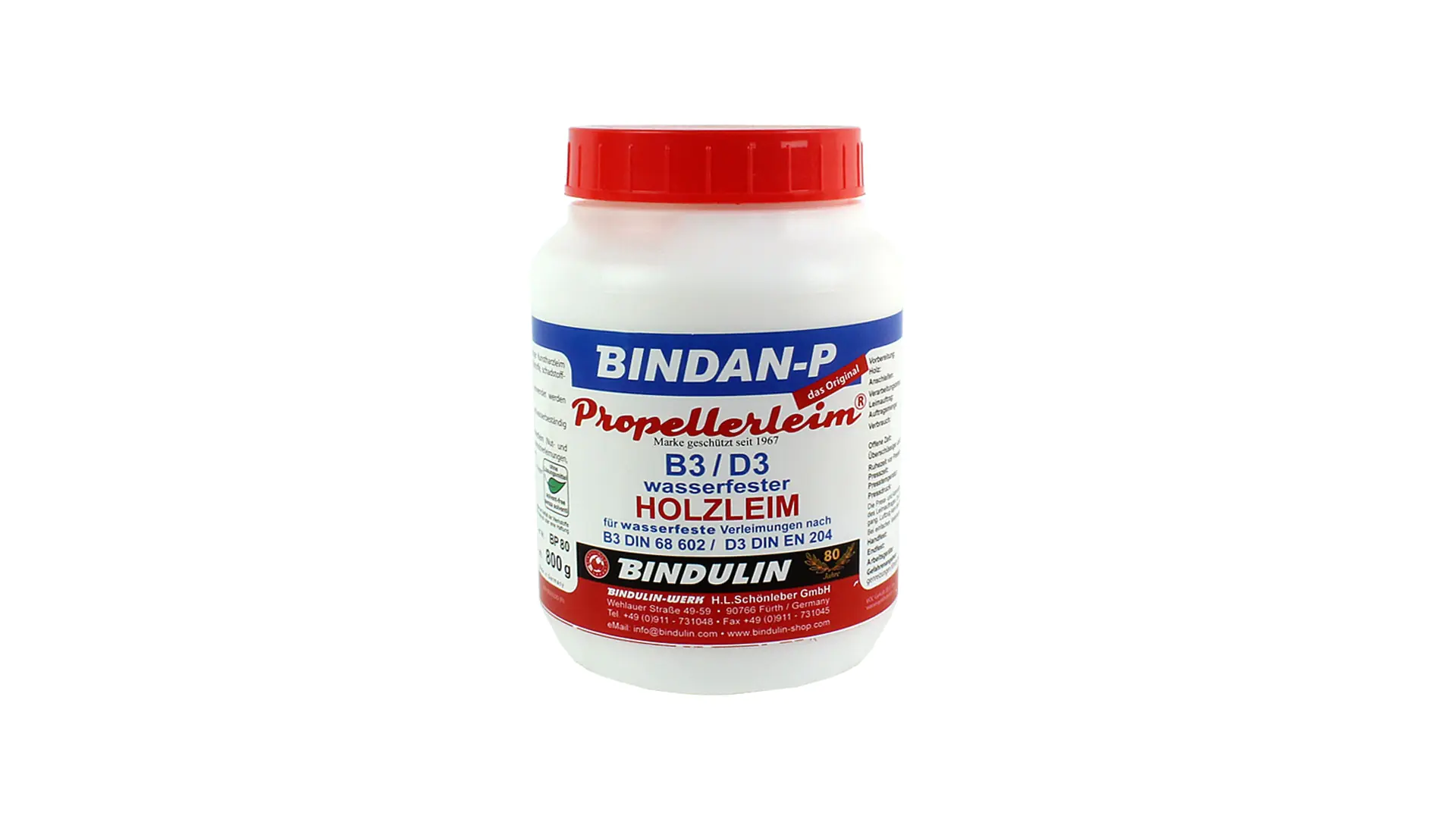April 4, 2025
Additional information
How can the open time of Bindan-P propeller glue be extended?
Bindulin provides tips on how to extend the open time of propeller glue. Following these tips can save you from the more difficult handling and lower strength of glues with a long open time.
Reduce temperature in the workspace
For example, if gluing is done at 17 °C (instead of 25 °C), there is much more time to prepare the parts, apply glue, and assemble. It is essential to ensure that all involved factors (wood, glue, tools, and room temperature) have the same temperature. The lowest possible temperature for gluing is theoretically 5-6 °C (dew point or earlier: chalk point), but the manufacturer Bindulin generally limits this to 8-9 °C.
Increase wood moisture and air humidity
The most popular method to achieve a longer processing time is to spray the wood with water the day before gluing, which increases the wood moisture. Overnight, the wood can absorb the moisture, and the next day the wood moisture is 3% higher. This additional moisture is released into the environment during the curing (drying) of the glue joint. A brilliant solution is to increase the air humidity - however, very few users have this technical capability - it is comparable to a rainy day. For example, gluing on a cold, dry winter day in a cool workshop is always faster than on a rainy summer day.
Reduce temperature in the workspace
For example, if gluing is done at 17 °C (instead of 25 °C), there is much more time to prepare the parts, apply glue, and assemble. It is essential to ensure that all involved factors (wood, glue, tools, and room temperature) have the same temperature. The lowest possible temperature for gluing is theoretically 5-6 °C (dew point or earlier: chalk point), but the manufacturer Bindulin generally limits this to 8-9 °C.
Increase wood moisture and air humidity
The most popular method to achieve a longer processing time is to spray the wood with water the day before gluing, which increases the wood moisture. Overnight, the wood can absorb the moisture, and the next day the wood moisture is 3% higher. This additional moisture is released into the environment during the curing (drying) of the glue joint. A brilliant solution is to increase the air humidity - however, very few users have this technical capability - it is comparable to a rainy day. For example, gluing on a cold, dry winter day in a cool workshop is always faster than on a rainy summer day.

